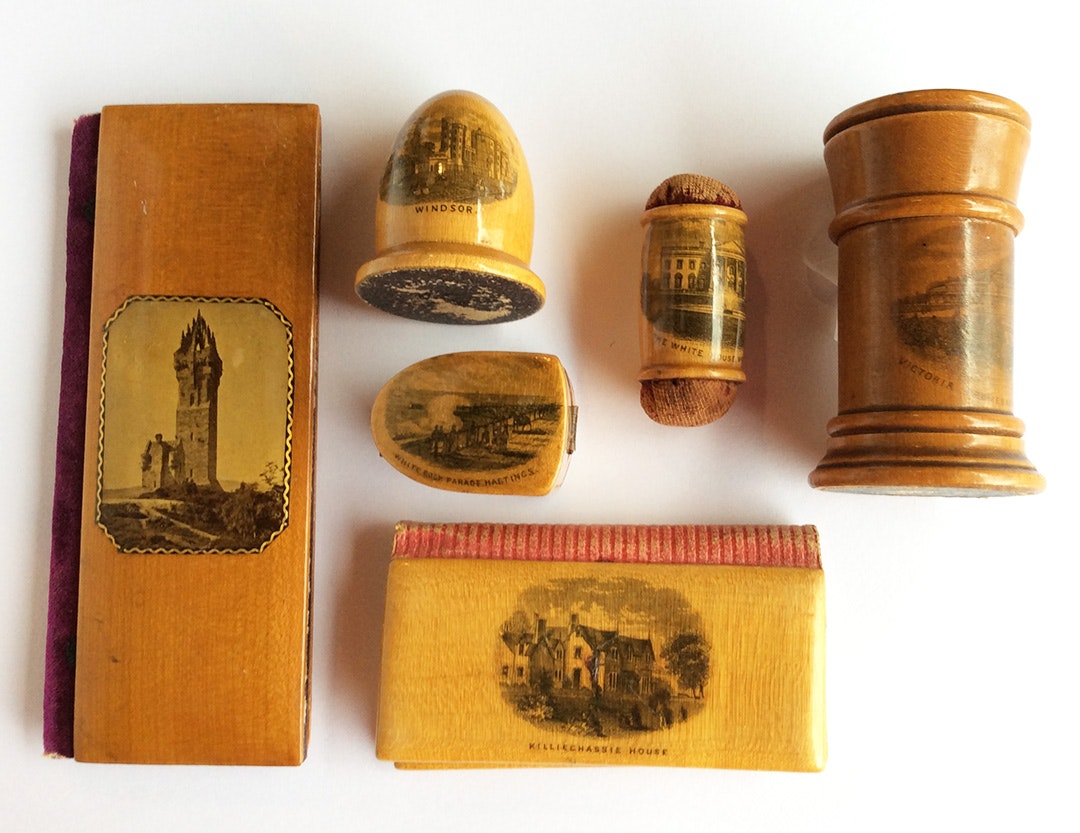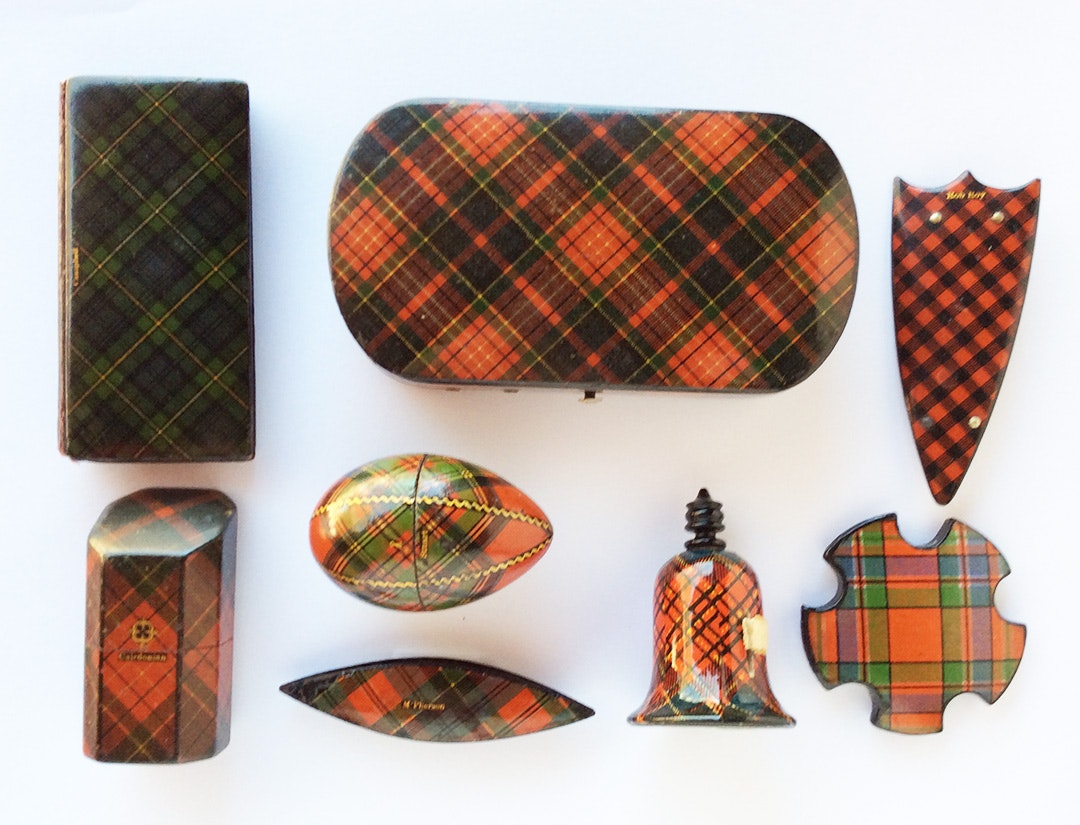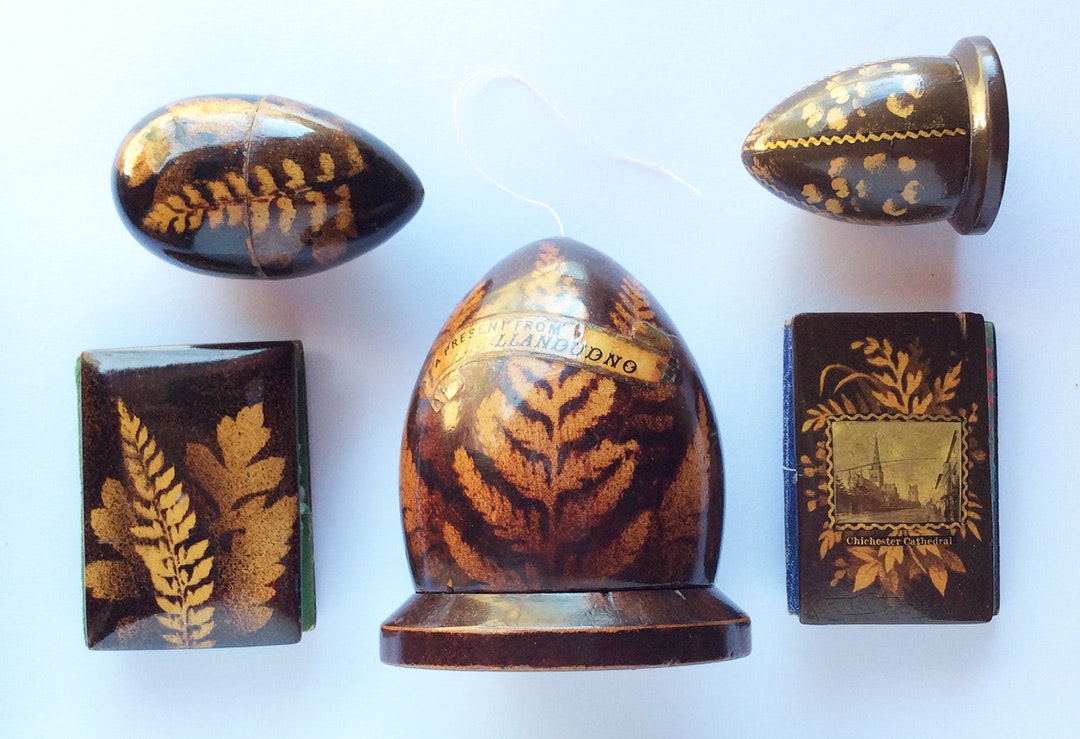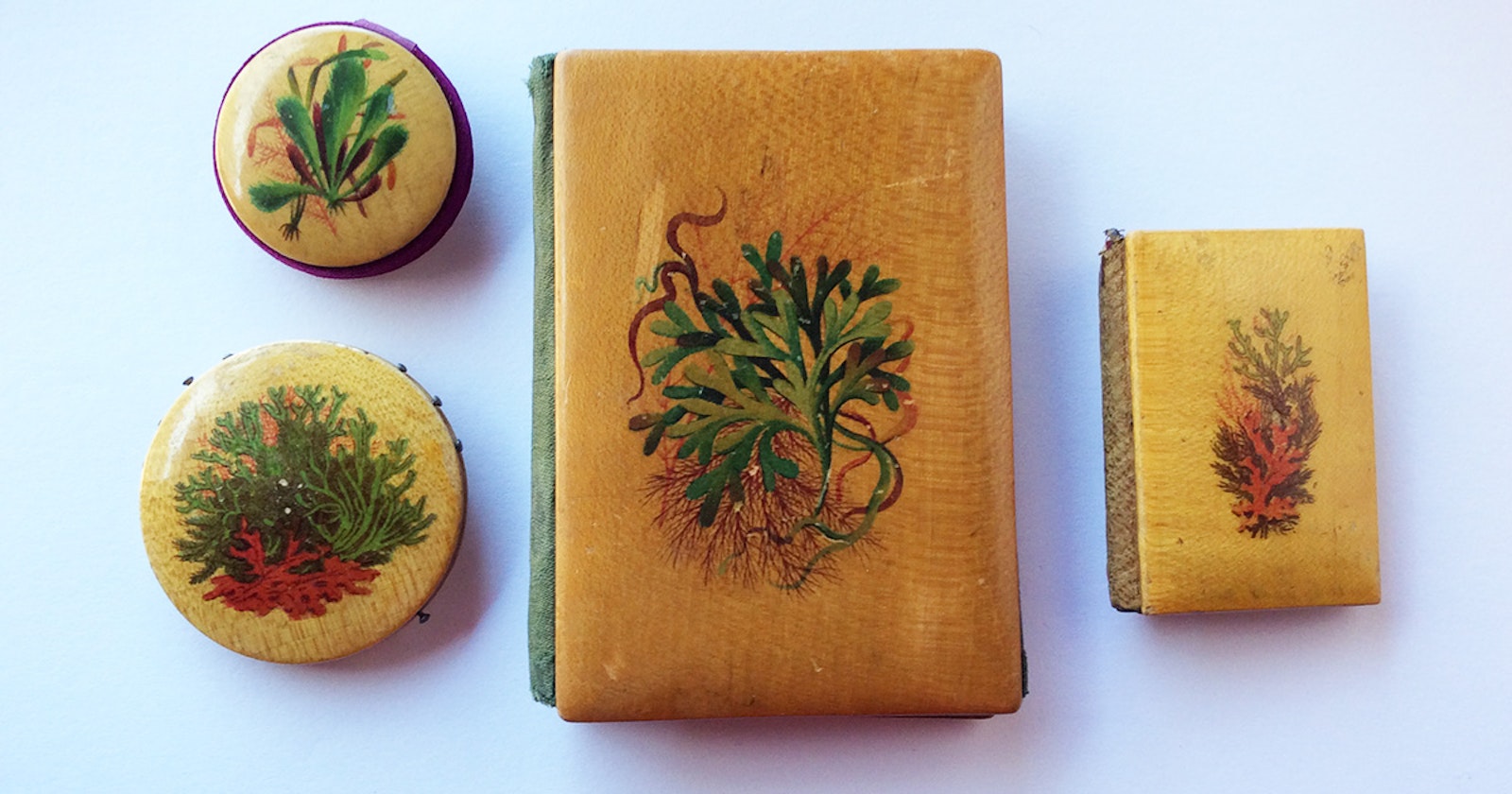I began collecting Mauchline ware because of my Scottish heritage and a lifelong passion for all things related to needlework. Mauchline (pronounced mawk-lin) is a small town in East Ayrshire, Scotland. Two of the things Mauchline is most known for are The National Memorial Burns Homes, dedicated to the poet Robert Burns, and the birthplace of the Victorian-era tourist souvenirs known as Mauchline ware.
The History Behind the Collectibles
In the late 1700s, skilled woodworkers in Mauchline began making small wooden boxes for storing snuff. Made from the cream-colored, tightly grained wood from the local sycamore trees, these boxes were decorated with hand-painted or inked designs and finished with multiple coats of amber-colored varnish for shine and durability, and soon, time-saving paper transfers were introduced. However, by the 1820s demand for snuff boxes had declined. The boxmakers adapted to the changing times and diversified to remain in business. They began making other small, useful wooden items, which were suitable as souvenirs for the increasing number of vacation travelers.
By 1825, William and Andrew Smith had established the prestigious W & A Smith Box Works in Mauchline, and they originally focused on providing the wooden packaging for their razor/knife-sharpening hones business. But they, too, eventually branched out into making souvenir items of every size, shape, and purpose. Besides decorating these new items with the typical transfer designs, these brothers cleverly invented a special printing machine that decorated their wares with transfers of authentic tartans and stylized plaids.
Almost 200 different products were manufactured by the woodworkers in Mauchline, including kitchen items, such as egg timers and napkin rings; sewing accessories, such as pin discs, pincushions, measuring tapes, tatting shuttles, thread boxes, and thread winders and holders; desk items, such as ink wells, rulers, and bookmarks; and game accessories, such as card holders and dice cups. They also made special orders of larger items, such as occasional tables, tea caddies, and trays. Unfortunately, the production of Mauchline ware ceased in 1933 due to a fire in the last factory.
My Mauchline Ware Collection
Mauchline ware is divided into five basic finishes with four additional types, which are rarer. The common finishes are Transfer, Tartan, Fern, Photographic, for which I have examples from my collection shown below, and Black Lacquer. The less-common categories include Shell/Seaweed, of which I have collected a few pieces; Cedar; Pattern; and Chromological.

Photographic and Transfer ware. Collection of the author.
Transfer Ware
Transfer ware is the largest finish group by number of items produced and product variety. They’re made by applying a black or colored transfer directly onto the wood surface. The majority of transfers were of buildings and landscapes, and they mostly depicted scenes in Great Britain. But some were of Europe, Canada, the United States, Australia, and even South Africa, creating an enhanced export business for the souvenirs.
Tartan Ware
The next largest finish group is identified by a tartan or plaid design. For non-flat items, such as egg-shaped holders and etuis, black paint was applied to the transfer joins and either a narrow, gold wavy line or other linear design was applied to further decorate and disguise the joins of the original transfer. Sometimes, a Scottish clan name was added to the tartan design.

Tartan ware. Collection of the author.
Fern Ware and Shell/Seaweed Ware
Fern ware showcases fern fronds and uses several different transfer processes. Like Fern ware, colorful Shell/Seaweed ware (shown at top) appealed to a greater worldwide audience because Victorians were fascinated with nature and spent much time and energy collecting, preserving, and naming flora and fauna specimens.

Fern ware. Collection of the author.
Photographic ware
As the name suggests, Photographic ware has an actual photograph glued directly to the wood; the photo was usually accompanied with additional transfers of sayings and floral designs.
As I mentioned in the beginning, there are additional finishes available, such as Cedar, Pattern, and Chromological. But they are not represented in my collection, yet, so I’ll omit discussion of them until I have some examples.
Resources
- Baker, John. Mauchline Ware and Associated Scottish Souvenir Ware. Shire Publications, 1985.
- Pinto, Edward H. and Eva R. Tunbridge and Scottish Woodware. G. Bell & Sons, 1970.
- Trachtenberg, David and Thomas Keith. Mauchline Ware: A Collector’s Guide. Antique Collectors’ Club, 2002.
- Von Furstenberg, Princess Ira with Andrew Nicolls. Tartanware: Souvenirs from Scotland. Pavilion Books, 1997.
Deanna Hall West is PieceWork’s needlework technical editor; she was previously the editor of The Needleworker magazine and has been in the needlework publishing and design industry for more than 35 years.

